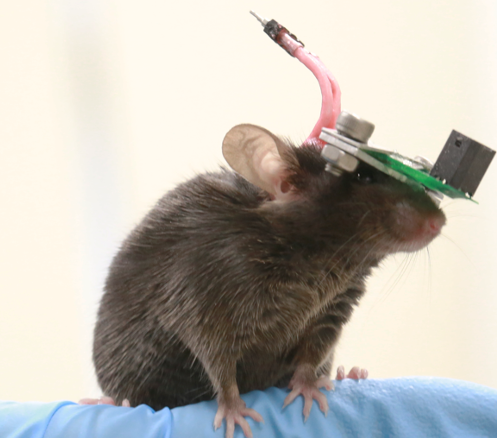Brain/Bio Medical Microsystems Lab
News
Brain/Bio Medical Microsystems Lab
News

작성자 KAISTBMM
작성일 2019-09-16 00:00 조회 1,725 댓글 0

A KAIST research team led by Prof. Hyunjoo Jenny Lee has developed the world’s first miniaturize ultrasound brain stimulation device for small freely-moving animals. Since ultrasound neuromodulation offers numerous advantages as a non-invasive brain stimulation modality for clinical applications, it is essential to investigate the effects of ultrasound neuromodulation using a wide range of animal models to find the cure.
Brain stimulation techniques have been actively researched and clinically applied since there is potential to overcome side effects and biological limitations of drug-mediated brain treatments. Existing stimulation methods of the specific brain region include deep brain stimulation (DBS) and optogenetics, which are highly invasive and not suitable for clinical applications. Transcranial magnetic stimulation (TMS) and transcranial electrical stimulation (TES) are non-invasive, but they suffer from limited penetration depth and wide stimulation region.
In contrast, ultrasound can be delivered non-invasively and reach deeper structures in our brain with high spatial resolution. Thus, non-invasive focused ultrasound stimulation technology has great potential as a next-generation brain stimulation technique. Animal behavior experiment is essential for brain stimulation research, but ultrasonic brain stimulation technology is in the early stages of development. Thus, only limited research results have been reported by using bulky transducers on fixed and anesthetized mice.
The KAIST team has implemented an ultra-lightweight capacitive micro-machined ultrasonic transducer (CMUTs) through microelectromechanical systems (MEMS) technology. The ultrasound center frequency, size, focal length, and ultrasonic intensity are designed for the mouse, and the device weight, which is less than 1g (around 0.05% of the mouse weight), is suitable for freely-moving, behavior experiments.
To evaluate the performance of the ultrasonic device, the motor cortex of the mouse brain was stimulated to observe the movement reaction of the forefoot, and the EMG of the trapezius was also confirmed. The researcher’s ultrasound devices can deliver ultrasound to a depth of 3-4 mm in the mouse brain and stimulate a 25% area of the total size of the mouse brain.
Based on the results of this study, the research team is investigating the effects of ultrasound on sleep by stimulating the brain of sleeping mice. In the future, the researchers will study not only sleep but also mice with diseases such as Parkinson’s disease, dementia, depression, and epilepsy. They expect that basic research on ultrasound neuromodulation using their system can eventually lead to new treatments for brain disorders.
---
움직이는 쥐의 초음파 뇌자극 기술이 KAIST Breakthroughs Fall 2019 에 선정되었습니다. 축하합니다.